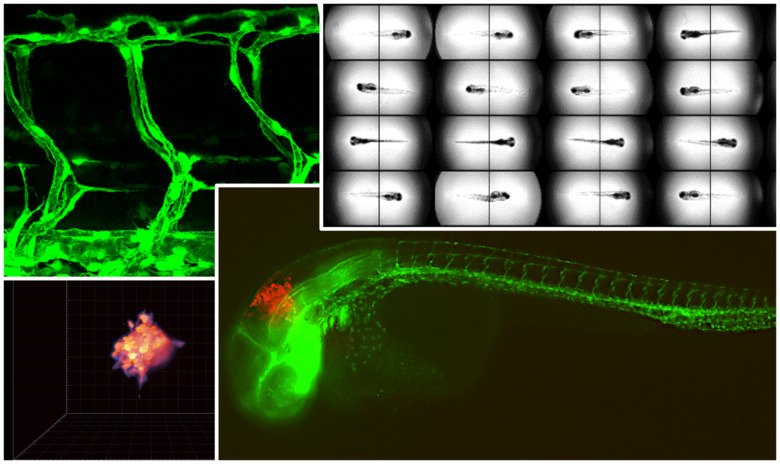Zebrafish in biomedical research
Since more than two decades, the zebrafish is a well-established animal model organism for basic, applied and pre-clinical research.
It is widely used to understand fundamental biological processes and to dissect pathophysiological pathways and its relevance for human physiology and pathology is undisputed. The zebrafish is moreover an essential, ethical sound and economically sustainable part in a majority of drug discovery and drug safety pipelines.

Some of the major advantages of the zebrafish model for basic and applied research
- Extremely rapid development with most organs formed two days after fertilization
- The optical transparence of the embryos which allows to easily follow biological phenomenon in a whole animal, like metastasizing cancer cells or much more
- The availability of tens of thousands of transgenic and knock-out lines which can easily be ordered from stock centers
- The fast accessibility of the genome for both transient and stable genetic modifications
- Zebrafish is the only vertebrate which can be used in high-throughput screenings as an embryo can be kept in a well of a 96-well plate
In most of the times, you will get scientific data faster and more economically sustainable when you use the zebrafish instead of rodents. The data you obtain in zebrafish can then be used, if necessary, to refine experimental studies in rodents, e.g. by excluding toxic or non-active compounds which is an essential part of the 3R strategy which every animal study needs to adhere to.
Break-through research with zebrafish
Furthermore, the zebrafish offer extraordinary possibilities for imaging, in-vivo imaging and real-time imaging. Embryos are completely transparent and biological or developmental processes can be followed in vivo. Specific transgenic strains are available of which adults also lack any pigmentation and which offer similar superior imaging possibilities
Combining studies with different animal species
Below you find a selection of reviews which will give you more detailed information about the zebrafish and its role in biomedical research!
Zebrafish patient avatars in cancer biology and precision cancer therapy
Zebrafish disease models in drug discovery: from preclinical modelling to clinical trials
